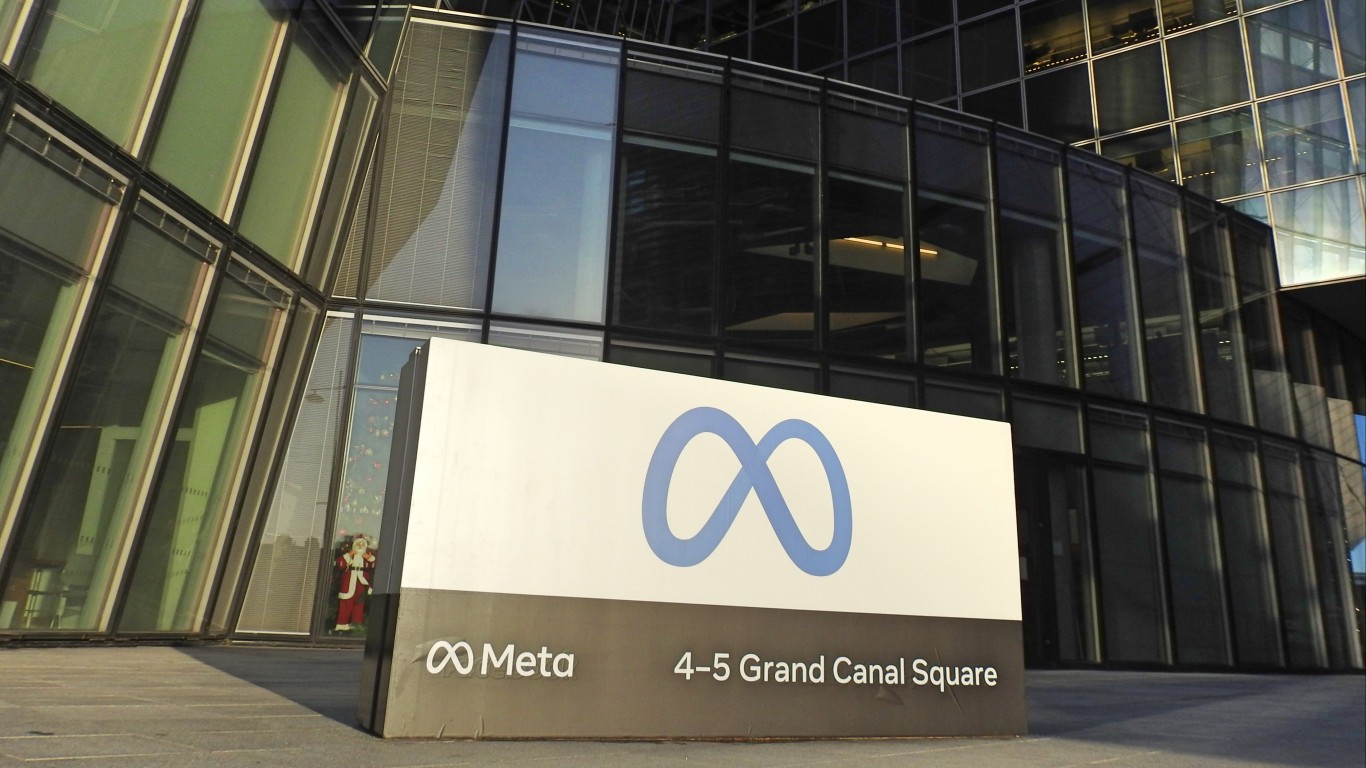 The size of the American blue-collar workforce continued to decline in the last decade. Between 2000 and 2010, the economy lost roughly 4 million blue-collar jobs, according to data from the Bureau of Labor Statistics, mainly as a result of manufacturing job losses, the housing crisis and, of course, the recession. 24/7 Wall St. analyzed the ten states where this erosion was the worst. These are the leading edge of an awful trend that has significant implications for the future of the U.S.’s economic recovery.
The size of the American blue-collar workforce continued to decline in the last decade. Between 2000 and 2010, the economy lost roughly 4 million blue-collar jobs, according to data from the Bureau of Labor Statistics, mainly as a result of manufacturing job losses, the housing crisis and, of course, the recession. 24/7 Wall St. analyzed the ten states where this erosion was the worst. These are the leading edge of an awful trend that has significant implications for the future of the U.S.’s economic recovery.
Early in the decade, the manufacturing base in the U.S. began eroding swiftly as companies accelerated the relocation of plants to areas of the world with inexpensive labor, most notably China and Mexico. Later in the decade, as the housing market collapsed and the economy fell into recession, large industries like auto manufacturing were further hurt by drops in demand.
- Read: The Ten States Running Out Of Blue-Collar Jobs
- Read: The Seven States Running Out Of White-Collar Jobs
The housing crisis hit another segment of blue-collar jobs. Falling home prices nearly halted building of new houses, and the home construction workforce was decimated. In states like California and Nevada, some home values plunged by more than 60%. Construction jobs in those areas disappeared. Property values fell sharply in other states like Arizona and Florida. Across the entire country, the construction industry shed a million jobs from 2000 to 2010
The appearance of some of these states on this list is unexpected. Michigan and California are here, but so are Connecticut, New Hampshire and Utah. Connecticut had large numbers of small factories that made finished goods in cities like Bridgeport and New Haven that closed down. In New Hampshire, machining factories are now a smaller part of the economy than they were in 2000. Mining activity in Utah has dropped as the demand for metals used in U.S. manufactured goods fell due to the shift to overseas manufacturing, which was also further exacerbated by the recession.
The single largest question about how quickly the economy will recover is the source of future new employment. The IMF recently predicted that U.S. annual GDP growth will be below 3% until 2016, largely because it believes that unemployment will be 7% through 2014. There is no reason to believe that manufacturing or construction will rebound. That leaves the services sector, which has a large blue-collar component of retail sales people, hospitality workers, and fast food restaurant employees. These jobs do not pay nearly as well as the jobs on the Detroit assembly lines did. They also do not offer the extravagant benefits and retirement packages that the auto industry once did. This only serves to highlight the effects this decade-long trend of blue-collar job erosion has on the U.S. economy.
In order to identify the states in which blue-collar jobs have decreased the most as a percent of the total workforce, 24/7 Wall St. reviewed data from the Bureau of Labor Statistics on the type of occupations people have in different states. Using accepted definitions of white and blue-collar jobs, we calculated the percent of the total workforce that was blue collar in 2000 and in 2010. Some of the positions considered blue collar include manufacturing, retail sales, drivers, food preparation and construction jobs. We then identified those states where the percent of the blue-collar workforce had decreased significantly.
These are the states where blue-collar jobs are disappearing.
10. Connecticut
 > Median Income: $67,721 (3rd highest)
> Median Income: $67,721 (3rd highest)
> Change in Median Income: +25.1% (25th largest)
> Unemployment: 9.1% (19th highest)
> GDP (millions): $211.3 billion (23rd highest)
> Change in blue-collar workforce: -6%
In 2000, Connecticut had one of the lowest unemployment rates in the country, just 2.1% in October, compared to a national rate of 4%. Since then, unemployment has risen to 9.1%, and roughly 100,000 jobs have been lost. Impressively, in the white-collar sector, Connecticut had a slight net increase in the total workforce during the past decade. More than 90,000 blue-collar jobs were lost in the state during that time. Most of these losses were in factory jobs, including machinists, assembly workers, team assemblers and welders.
9. California
 > Median Income: $60,392 (8th highest)
> Median Income: $60,392 (8th highest)
> Change in Median Income: +29.5% (8th largest)
> Unemployment: 11.7% (2nd highest)
> GDP (millions): $1.73 trillion (the highest)
> Change in blue-collar workforce: -6.1%
In September 2010, when the national unemployment rate was 9.6%, California’s was 12.5%. California lost a total of 642,000 jobs between 2000 and 2010, the most of any state. Surprisingly, the state actually added 150,000 white-collar jobs over this period. Just under 800,000 blue-collar jobs, on the other hand, were shed. Over 500,000 of these lost jobs were production occupations, such as factory jobs.
8. Wyoming
 > Median Income: $51,990 (20th highest)
> Median Income: $51,990 (20th highest)
> Change in Median Income: +34.6 (2nd largest)
> Unemployment: 6% (7th lowest)
> GDP (millions): $34.4 billion (4th lowest)
> Change in blue-collar workforce: -6.38%
Wyoming’s had a net gain of 37,000 employees between 2000 and 2010, but just 13,000 were blue-collar workers. According to the Wyoming Business Report, the state is experiencing one of the fastest rates of business growth in the country. However, according to the publication, most of these jobs have come from areas like financial services and the energy sector. While in absolute terms the number of blue-collar workers increased, the state still lost nearly 15,000 jobs in installation, maintenance and repair.
Also Read: Funds Watch: Are There Opportunities in Retail ETFs?
7. Georgia
 > Median Income: $49,466 (25th highest)
> Median Income: $49,466 (25th highest)
> Change in Median Income: +19.8% (10th smallest)
> Unemployment: 9.8% (10th highest)
> GDP (millions): $362 billion (11th highest)
> Change in blue-collar workforce: -6.42%
Georgia’s economy was booming in the 1990s. The 2000s were not as kind. While just fewer than 80,000 white-collar jobs were created, the state lost slightly more than 200,000 blue-collar jobs. Over 150,000 of these jobs were in production, including jobs lost due to the closing of a number of automobile plants. The state’s unemployment rate currently remains 0.7 percentage points above the national average.
6. Arizona
 > Median Income: $50,296 (23rd highest)
> Median Income: $50,296 (23rd highest)
> Change in Median Income: +30.5% (6th largest)
> Unemployment: 9.1% (19th highest)
> GDP (millions): $288.4 billion (20th highest)
> Change in blue-collar workforce: -6.77%
For the first half of the decade, Arizona had one of the fastest-growing business economies in the country. The subprime mortgage crisis hit the state hard, and unemployment skyrocketed in the once-prosperous southwestern state. The state netted a gain of nearly 140,000 white-collar jobs but lost a large number of blue-collar positions. More than 40,000 manufacturing jobs vanished in this time. However, the biggest sector that lost workers was construction, in which nearly 60,000 workers were laid off as a result of the burst of the home-price bubble.
5. Michigan
 > Median Income: $48,700 (24th highest)
> Median Income: $48,700 (24th highest)
> Change in Median Income: +12.2% (the smallest increase)
> Unemployment: 10.3% (7th highest)
> GDP (millions): $344.8 billion (12th highest)
> Change in blue-collar workforce: -6.8%
Michigan was one of the states hit hardest by the recession, with overall unemployment reaching 14.1% in August 2009. In some areas, such as Flint, unemployment climbed above 25%. This high rate of joblessness can be devastating to a manufacturing state like Michigan. Throughout the last decade, the state lost a total of just under 623,000 blue-collar jobs. Combining white-collar and blue-collar jobs, the state lost a total 831,000 jobs. Michigan’s unemployment rate is still significantly higher than the national average.
4. Arkansas
 > Median Income: $38,542 (2nd lowest)
> Median Income: $38,542 (2nd lowest)
> Change in Median Income: +16.1% (the third smallest increase)
> Unemployment: 7.8% (21st lowest)
> GDP (millions): $91.8 billion (17th lowest)
> Change in blue-collar workforce: -7.18%
Between 2000 and 2010, Arkansas was one the states that fared best in terms of unemployment, and the state experienced a slight growth in jobs over that time. However, the number of blue-collar jobs in the state dropped by more than 50,000. The biggest decreases came in manufacturing, in which more than 60,000 positions disappeared over the course of the decade.
3. Vermont
 > Median Income: $51,284 (22nd highest)
> Median Income: $51,284 (22nd highest)
> Change in Median Income: +26.6% (18th largest)
> Unemployment: 5.4% (6th lowest)
> GDP (millions): $23.1 billion (the lowest)
> Change in blue-collar workforce: -7.23%
Vermont lost a little more than 17,000 blue-collar jobs during the 2000s but added almost 6,500 white-collar jobs. Over two thirds of the blue-collar jobs that were lost were production jobs. Relative to many other states, however, Vermont has recovered greatly from the recession. Unemployment peaked at 7.3% in the state, but has since fallen to 5.4%, which is 3.7 percentage points lower than the national average. This recovery has been largely driven by tourism.
2. Utah
 > Median Income: $55,642 (15th highest)
> Median Income: $55,642 (15th highest)
> Change in Median Income: +22.2% (34th largest)
> Unemployment: 7.3% (14th lowest)
> GDP (millions): $102.8 billion (18th lowest)
> Change in blue-collar workforce: -7.27%
Utah had net job growth of more than 110,000 positions between 2000 and 2010. However, all but 15,000 of these were white-collar. The state lost nearly 17,000 factory jobs during that time. According to the Utah paper The Desert News, the state is beginning to show recovery in retail and manufacturing jobs, two of the hardest hit sectors.
1. New Hampshire
 > Median Income: $63,033 (7th highest)
> Median Income: $63,033 (7th highest)
> Change in Median Income: +23.7% (22nd smallest)
> Unemployment: 4.8% (3rd lowest)
> GDP (millions): $54.6 billion (10th lowest)
> Change in blue-collar workforce: -7.92%
Between 2000 and 2010, the percentage of New Hampshire’s workforce made up of blue-collar workers decreased by almost 8%. Thirty thousand blue-collar jobs were lost, the vast majority of which were production jobs, including factory jobs. The state also has the lowest percentage of residents living below the poverty level. New Hampshire has made a strong recovery post-recession. The unemployment rate is currently at 4.8% — the third lowest in the country. And according to a recent article in Foster’s Daily Democrat, New Hampshire’s manufacturing industry has also made a strong comeback.
Want to Retire Early? Start Here (Sponsor)
Want retirement to come a few years earlier than you’d planned? Or are you ready to retire now, but want an extra set of eyes on your finances?
Now you can speak with up to 3 financial experts in your area for FREE. By simply clicking here you can begin to match with financial professionals who can help you build your plan to retire early. And the best part? The first conversation with them is free.
Click here to match with up to 3 financial pros who would be excited to help you make financial decisions.
Thank you for reading! Have some feedback for us?
Contact the 24/7 Wall St. editorial team.



